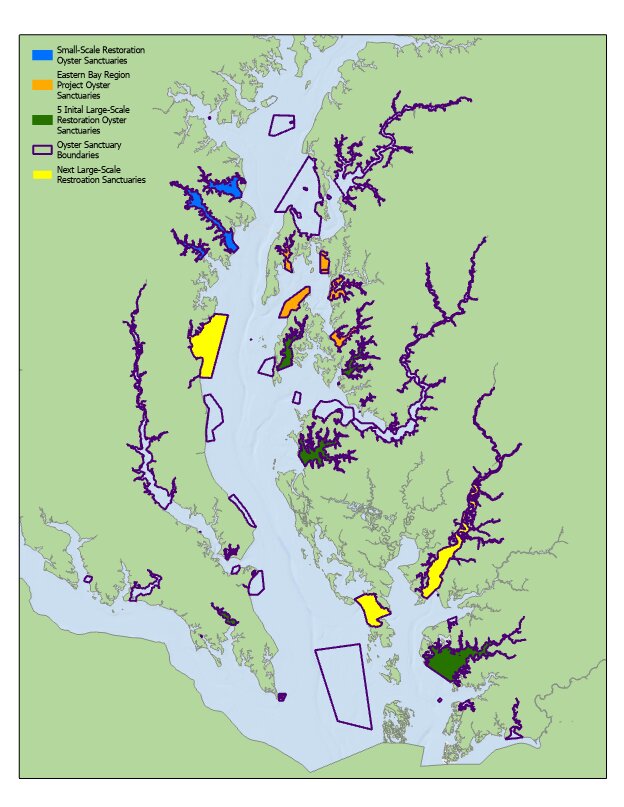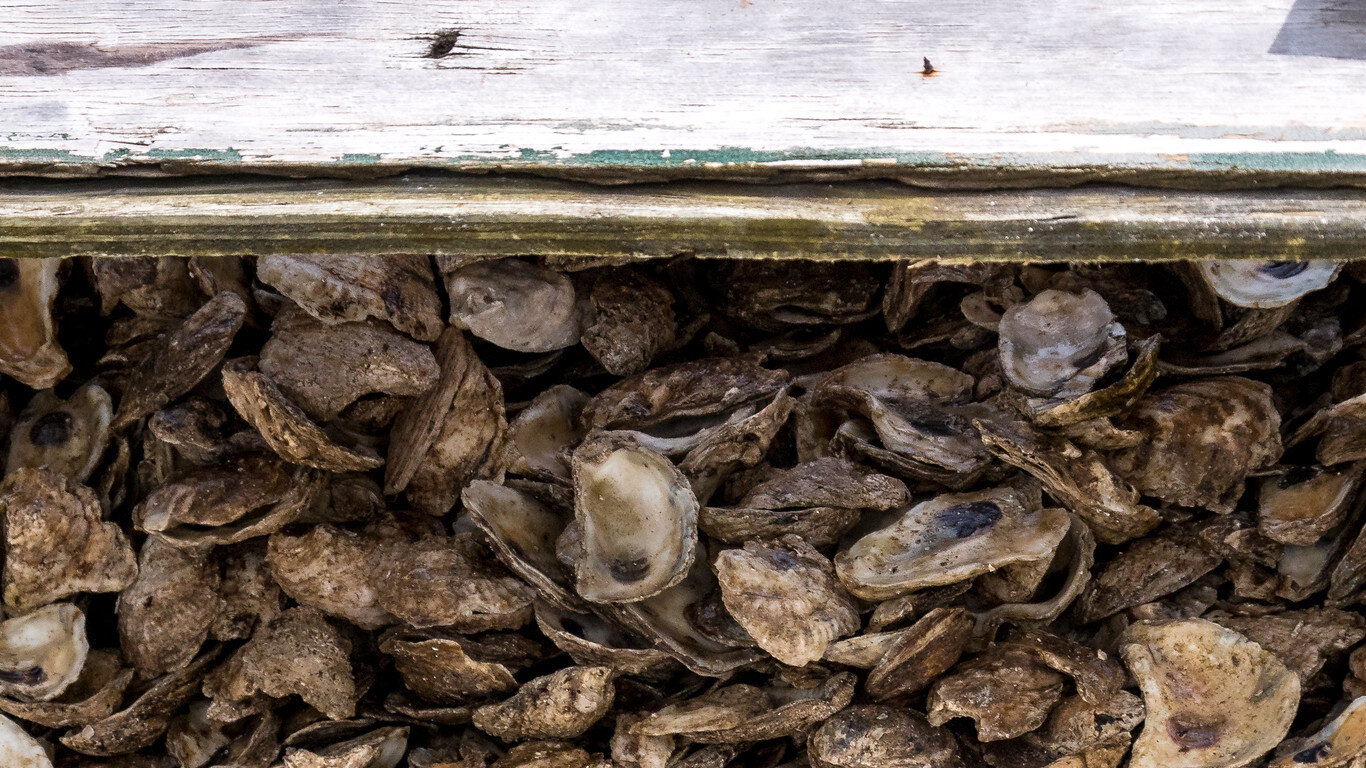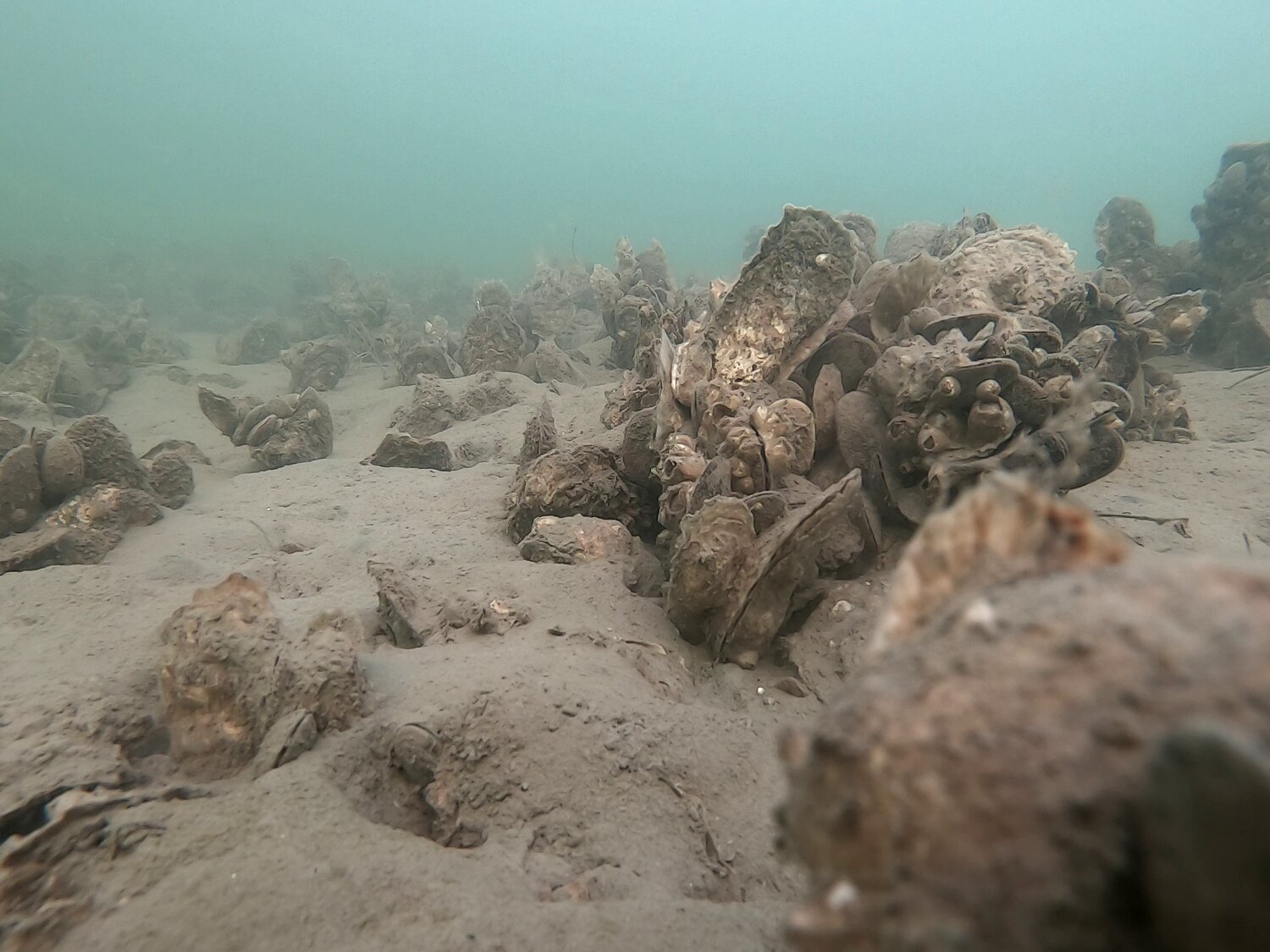Maryland DNR announces next three large-scale oyster restoration sanctuaries
The Maryland Department of Natural Resources has selected the next three sites for large-scale oyster restoration in Maryland waters of the Chesapeake Bay, marking the beginning of the state’s …

You must be a member to read this story.
Join our family of readers for as little as $5 per month and support local, unbiased journalism.
Already a member? Log in to continue. Otherwise, follow the link below to join.
Please log in to continue |
Maryland DNR announces next three large-scale oyster restoration sanctuaries
The Maryland Department of Natural Resources has selected the next three sites for large-scale oyster restoration in Maryland waters of the Chesapeake Bay, marking the beginning of the state’s next phase of major oyster restoration.
The department will conduct oyster restoration and monitoring in sanctuaries in Herring Bay, the Nanticoke River, and Hoopers Strait. Staff presented the selected sites to the Oyster Advisory Commission at its meeting Tuesday, Oct. 8.
Planning for these new restoration efforts comes as the department concludes its initial restoration of the “big five” sanctuary sites as required in the 2014 Chesapeake Bay Watershed Agreement. Initial restoration is complete at four sanctuaries, with work on the last site in Manokin River scheduled to be completed on target for 2025.
“These three large-scale restoration sanctuaries represent a new chapter for oyster restoration in Maryland,” Department of Natural Resources Secretary Josh Kurtz said. “We’ve had tremendous success with our existing restoration sanctuaries, and we’re excited to build on that achievement and keep up the momentum for oyster recovery in the Chesapeake Bay.”
The new restoration sites are part of the department’s new Four Point Oyster Sanctuary Plan. The plan was developed to help guide future oyster sanctuary restoration and management in Maryland. The four points include monitoring the first five large-scale sanctuaries; evaluating underperforming sanctuaries; continuing and expanding oyster restoration in sanctuaries; and developing strategies to connect oyster restoration to watershed restoration.
Eastern oysters (Crassostrea virginica) remain at a fraction of their historic population levels in the Bay after declines due to historic overharvesting, disease-related mortality, habitat degradation, and reduced water quality. Oysters act as a keystone species in the ecosystem of the Bay, provide a critical role by naturally filtering water, and continue to be an economic driver for the region.
Sanctuaries, which are permanently closed to harvest except on aquaculture lease sites, are areas where oysters can grow undisturbed in order to enhance the overall breeding population and build reefs that offer crucial habitat to many other Bay species. Restoring a sanctuary involves building hard substrate that can support reefs, and planting spat, or juvenile oysters.
Though final acreage of restoration at the next three large-scale sites will depend on further planning and study of the selected areas, DNR staff are expecting the Hoopers Strait restoration sanctuary to be comparable in size to the state’s three largest restoration sites — Harris Creek, Little Choptank, and Manokin — which range from 348 to 455 acres.
Restoration at Herring Bay could be larger, potentially making it the state’s largest restoration effort to date.
Work at the Nanticoke River sanctuary, which will be a smaller site of about 175 acres on the southern portion of the Eastern Shore, is expected to begin in the spring and summer of 2025. In 2026, restoration will begin at either Herring Bay, near southern Anne Arundel County, or Hoopers Strait, near Dorchester County, with work at the third site to follow.
The Chesapeake Bay Program is expected to set out new restoration goals for partner states beyond 2025. The department’s Assistant Secretary of Aquatic Resources Jackie Specht said Maryland’s new large-scale restoration sites will be a way to take proactive steps toward further restoration before the goals are established.
“We met the goals of the 2014 Watershed Agreement for oyster restoration, and we anticipate additional ambitious goals for recovery after 2025,” Specht said. “With these three restoration projects, we’re getting started early on additional restoration and we’re maintaining our continuous effort to establish more productive oyster habitat in the Chesapeake Bay.”
The department worked with its Oyster Advisory Commission to acquire feedback on which sanctuary areas would be best suited for the next restoration areas. The Commission recommended three primary considerations in selecting the new areas: 1) the potential for a self-sustaining oyster population, 2) economic efficiency, and 3) working in different salinity zones to mitigate disease risk.
The Nanticoke River sanctuary has firm bottom and will only require planting spat-on-shell, while Herring Bay has a large area that will support reef-based construction and spat-on-shell planting. Hoopers Strait will receive substrate and is near aquaculture leases and harvest areas that could benefit from spat that spread from the sanctuary.
“Together, these three restoration sanctuaries will strengthen the diversity of Maryland’s sanctuary program,” DNR Fishing and Boating Services Director Lynn Fegley. “With new projects on both the Western and the Eastern Shore, as well as the mid- and lower Bay, we’re helping to spread out disease risk and increase the oyster broodstock across all areas of the Chesapeake Bay.”
The new restoration projects come at an exciting time for oysters in Maryland. As of 2023, across the “big five” oyster restoration sanctuaries, 98% of 6-year-old reefs have met the minimum success criteria for oyster density–15 oysters per square meter over 30% of the reef area — and 83% had more than 50 oysters per square meter in the same area.
Harris Creek, the first Maryland sanctuary to be targeted, is now considered fully and successfully restored.
Maryland now has more than 1,000 acres of restoration oyster reefs, which is equivalent to 1.5 square miles or more than 800 football fields. Last year, the state reached record-setting oyster spat plantings.
This year in the Manokin River, the largest sanctuary in either Maryland or Virginia to be restored, department staff monitoring the site found that the natural spatset, or the number of juvenile oysters, was high enough that planting of hatchery-reared spat-on-shell was not needed. With 90 acres that will not require initial planting of oysters, this saves the department $1.8 million on the site that can be spent on oyster recovery elsewhere.
Additional monitoring and planned second plantings will continue to foster the success of the first five sanctuaries.
The department is also currently planting at sites in Eastern Bay, which represents a new dynamic for oyster restoration as a multi-use project that includes protected sanctuaries, aquaculture lease sites, and harvest areas. The department identified Eastern Bay as a priority area in 2019 and launched the Eastern Bay Project.
The Maryland General Assembly committed $2 million for oyster restoration per year in Eastern Bay in 2024 and 2025, with $1 million for spat-on-shell plantings in sanctuary areas and $1 million for shell and spat-on-shell plantings in public fishery harvest areas annually.
Last year, DNR shellfish biologists recorded an outstanding natural spatset of juvenile oysters in Maryland waters of the Chesapeake Bay. This abundant year-class of new oysters strengthens the overall population in both sanctuary and harvest areas for the future. In the 2023 to 2024 season, watermen harvested an estimated 430,000 bushels of oysters commercially in Maryland, generating a dockside value of about $15 million.
Last year, Maryland’s aquaculture operations harvested a record yield of 94,286 bushels of oysters.











